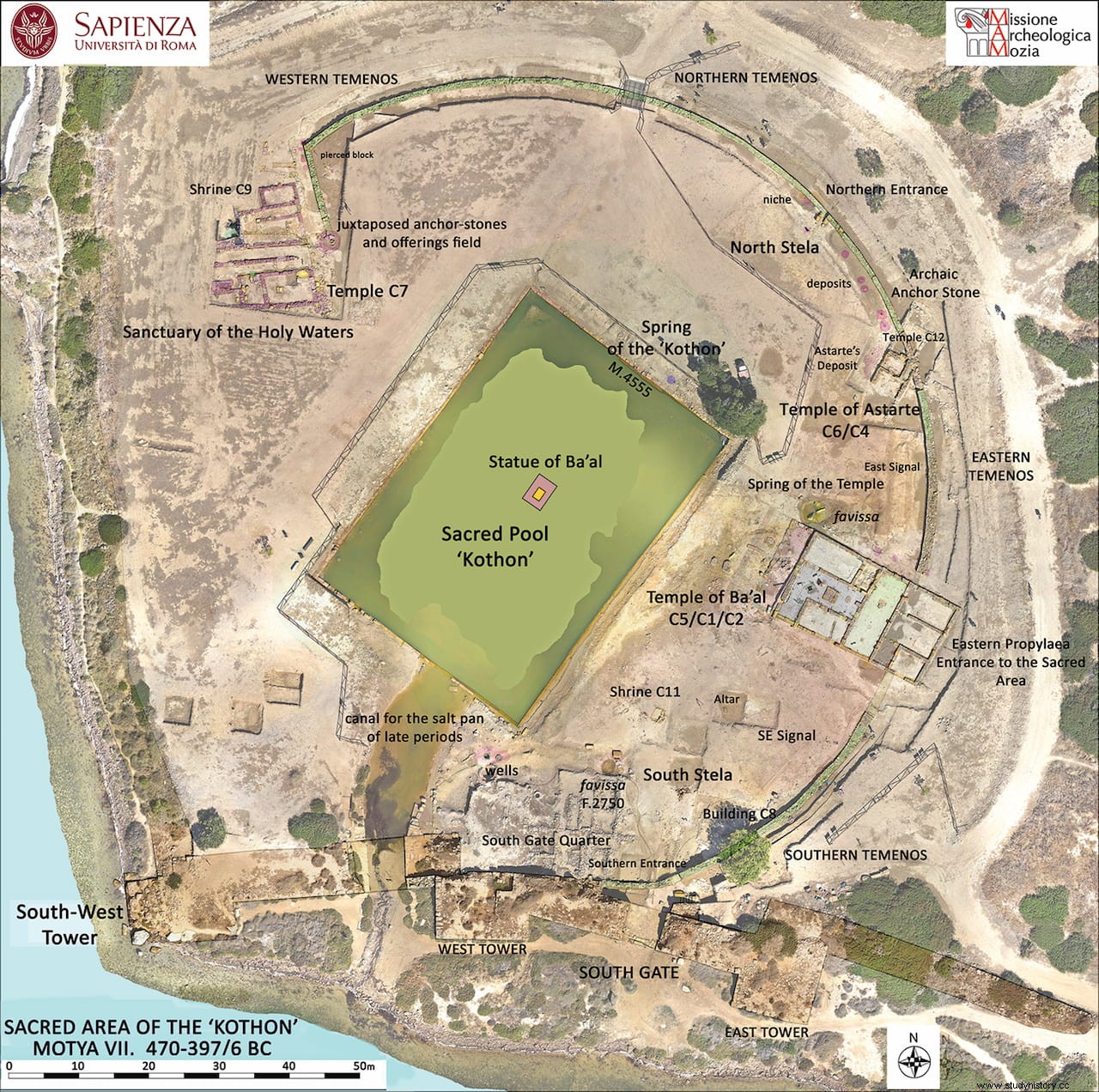Archaeological investigations carried out in Mozia (on the current island of Saint Pantaleon), the Phoenician city that flourished in the extreme west of Sicily between the 8th and 4th centuries BC, have revealed a large sanctuary delimited by a circular temenos in the center of which is a sacred pool, heretofore interpreted as a cotton (port facility of Phoenicians and Carthaginians)
The research, carried out by the University of Sapienza and the Regional Superintendence of Cultural and Environmental Heritage of Trapani, has been published in the journal Antiquity .
A team of archaeologists coordinated by Lorenzo Nigro, from the Department of the Italian Institute of Oriental Studies, has discovered that a 2,500-year-old artificial basin, previously believed to be a military port, is actually one of the largest sacred pools in the world. Mediterranean.

The discovery took place in the island city of Mozia, which was a bustling Phoenician port in the first millennium BC. The pool was added around 550 BC, when the city was rebuilt after an attack by Carthage, Rome's ancient rival.
The pool was rediscovered in the 1920s. Archaeologists concluded that it must have been an artificial port, since Carthage had a similar structure, called a cotton , which served as a military port.
However, new research on the site, published in the journal Antiquity , revealed that this was not the case:the lake was aligned with the stars and was the center of a huge religious sanctuary. For a century the Mozia cothon was thought to be a port, but new excavations have drastically changed our interpretation:it was a sacred pool at the center of a huge religious complex , explains Lorenzo Nigro, author of the research carried out together with the Regional Superintendence of Cultural and Environmental Heritage of Trapani. These new excavations are also part of a decade-long project in Mozia.

Previous investigations had uncovered a temple of Baal on the edge of the cotton of Mozia, instead of the planned port buildings. This unexpected discovery led to new research on cotton beginning in 2010. Over the next 10 years, Professor Nigro and the research team drained and excavated the basin, which is longer and wider than an Olympic swimming pool.
Then we discovered that it could not be used as a port:it was not connected to the sea, but was fed by natural springs Nigro adds. The team also discovered other temples flanking the cotton , along with stelae, altars, votive offerings, and a plinth in the middle of the lake that once contained a statue of Baal. Taken together, these elements indicate that it was not a port, but a sacred pool in the center of one of the largest cultural complexes of the preclassic Mediterranean.
Mapping revealed that the site was aligned with the stars:the nearby Temple of Baal is aligned with Orion rising at the winter solstice, while contrails and other features were aligned with other astronomical events. This shows the deep knowledge of the sky that ancient civilizations had. In addition, the flat surface of the pool could have served to follow these celestial movements, which were important both for navigation and for religious festivals.

Much of this knowledge came from other ancient cultures, suggesting that Mozia was an open and tolerant cultural melting pot. Historical evidence also attests to this liberal attitude, which was probably also the cause of the enmity with the city of Carthage, contributing to Mozya's downfall. The pool has been filled in and a copy of the statue of Baal has been placed in the center to reproduce the visual impact an inhabitant of ancient Mozia might have felt.
